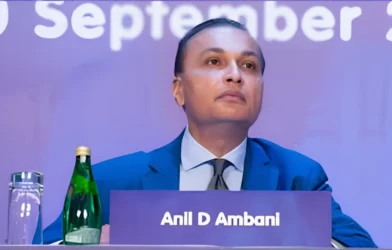Author: Dev Patel | EQMint | General News
In a remarkable turn for mutual fund flows, September 2025 witnessed Systematic Investment Plan (SIP) inflows hit a record-breaking ₹29,361 crore, up from ₹28,265 crore in August. Meanwhile, the number of investor accounts contributing via SIPs climbed to 9.25 crore, compared with 8.99 crore in the previous month. Alongside this strong inflow, the assets under management (AUM) via SIPs swelled to ₹15.52 lakh crore.
Yet the enthusiasm carries a counterintuitive twist — a sharp rise in SIP stoppages. According to the Association of Mutual Funds in India (AMFI), 57.73 lakh new SIP accounts were registered during September, but 44.03 lakh SIPs either matured or were discontinued, culminating in a stoppage ratio of 76.3%, up from 74% in August.
The Stoppage Ratio: What It Means & Why It Matters
The SIP stoppage ratio — the proportion of plans that are paused, discontinued, or matured relative to the total number of active SIPs — is a closely watched gauge of investor confidence and behavioral trends. For most of 2024, this ratio hovered between 50–60%, indicating moderate levels of discontinuation.
But in early 2025, things got turbulent. In January, the ratio spiked past 100%, signifying that more SIPs stopped than new ones started. In April, it hit an extraordinary high of 296% — a red flag pointing to widespread pause or exit from SIPs. Since then, the ratio has gradually normalized and now sits between 56%–76% (June to September).
A stoppage ratio above 100% is alarming: it suggests that investors are pulling back or liquidating their regular investments, perhaps under duress from market volatility or personal cash-flow pressures. That said, the recent levels (though high) are part of a stabilization from earlier extremes, rather than a renewed decline.
Deciphering the Paradox: More Inflows + More Stoppages
How can SIP inflows touch record highs while many investors are also stopping? The answer lies in scale, timing, and investor segmentation:
- High base effect: With such a large base of existing SIPs, new inflows can still be massive even if a significant fraction stops. The engine remains running even as parts are turned off.
- New vs. old accounts: Many new SIP accounts drive inflows, even while older or underperforming SIPs get discontinued.
- Maturity effects: Some SIPs conclude naturally as their predetermined tenure ends, contributing to the stoppage count even if investors are not deliberately cancelling.
- Behavioral shifts and liquidity constraints: Some investors may pause contributions due to short-term liquidity needs or higher-risk aversion, while others use market dips as buying opportunities.
Experts see the phenomenon less as a structural breakdown and more as a cyclical adjustment within equity markets.
What Experts Are Saying
Nehal Meshram, Senior Analyst at Morningstar Investment Research India, notes: “While the pace of inflows softened, the overall trend reflects sustained investor confidence in equities, supported by steady SIP contributions and retail participation.” The moderation in flows, in her view, is part of expected market dynamics rather than a panic signal.
Ankur Punj, MD & Business Head at Equirus Wealth, echoed similar sentiment: “Investors remained undeterred by intermittent volatility and global uncertainties. The moderation in monthly flows appears cyclical rather than structural, following exceptionally strong inflows in July and August.”
Both analysts suggest that disciplined investing through SIPs continues to be a preferred route for many. They counsel investors to maintain diversification — considering hybrid, multi-asset, or large-cap allocations — while remaining consistent in SIP commitment to manage market ups and downs.
Implications & What Investors Should Watch
The dual narrative of record inflows and rising stoppages underscores the evolving maturity of India’s mutual fund landscape. Some key takeaways and caveats:
- SIP remains central to equity inflows. Even amid volatility, retail investors continue to rely on the rupee-cost averaging discipline offered by SIPs.
- Liquidity and sentiment are fragile. High stoppage ratios, especially if sustained or worsening, could reflect stress in investor confidence or external shocks.
- Duration matters. Tenure-linked SIPs are likely to expire or roll off; distinguishing between natural maturity and forced redemption is crucial.
- Diversification and rebalancing. As markets oscillate, maintaining proper asset allocation across equity, debt, and hybrid funds can mitigate risk.
- Stay invested thoughtfully. Consistency often outperforms timing — particularly in long-term investing.
In conclusion, September’s SIP numbers present an intriguing paradox — while millions of investors continue to bet on India’s growth story through SIPs, a substantial share are also choosing to pause or exit. Whether this is a transient wobble or the start of a broader trend will depend heavily on market cues, macroeconomic pressures, and investor grit in the months ahead.
Disclaimer: This article is based on information available from public sources. It has not been reported by EQMint journalists. EQMint has compiled and presented the content for informational purposes only and does not guarantee its accuracy or completeness. Readers are advised to verify details independently before relying on them.









